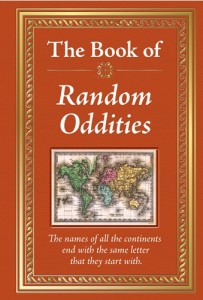Be a Scholar, Not a Driver, When it Comes to Blog Citations
“Cite” is a verb derived from the Latin citare, meaning to put in motion or summon, explain the editors of The Book of Random Oddities.
summon, explain the editors of The Book of Random Oddities.
To cite can mean to quote someone or someone else’s work. It can also mean naming someone in a court summons or giving them a parking ticket. So, as Random Oddities editors point out, scholars like to be cited; drivers don’t.
Citation plays an important part of my work as a blogger. With literally trillions of words being added to the Internet every day, anyone with access to a computer or cell phone can add content of their own at any time. Chances of content duplication are, of course, very high. And, while blogs are more casual and conversational than scholarly works, the fact is, people read blogs to get information. Readers have every right to know where that information comes from, so that they can judge its reliability.
I’m especially sensitive to that because of my work as an Executive Career Mentor at Butler University College of Business and an English Tutor at Ivy Tech Community College. Plagiarism (passing off someone else’s work as one’s own) is a big, bad word on college campuses, as it should be. Students are taught to use citations and reference pages to show where they got their information. That way, they avoid plagiarism by properly attributing statements to their proper authors.
In your own work, I teach blog content writers, you can “curate” – gather and present – information from many sources that you believe will be relevant and helpful to your readers. How do you give credit to the sources of your information? The blogging equivalent of citations is links. So even if you’re putting your own unique twist on the topic, link to websites from which you got some of your original information or news.
Honesty, as they say, is its own reward. But, when it comes to the Internet, there are practical benefits along with the psychic ones. Electronic links have the potential to enhance search engine rankings, as you create back-and-forth digital ties with other professionals.
Be a scholar, not a driver, when it comes to blog citations!





Follow us online!